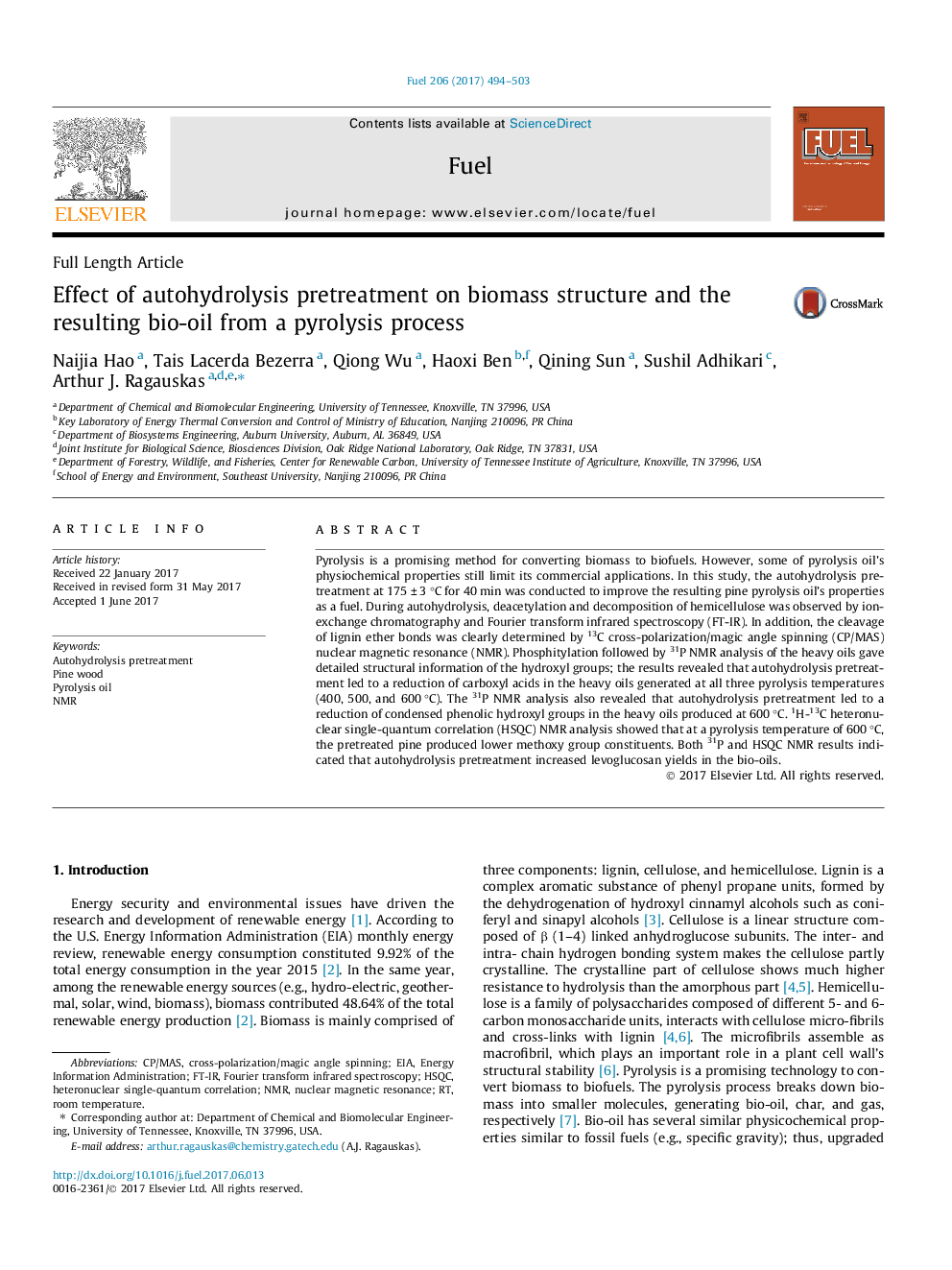| Article ID | Journal | Published Year | Pages | File Type |
|---|---|---|---|---|
| 4768593 | Fuel | 2017 | 10 Pages |
Abstract
Pyrolysis is a promising method for converting biomass to biofuels. However, some of pyrolysis oil's physiochemical properties still limit its commercial applications. In this study, the autohydrolysis pretreatment at 175 ± 3 °C for 40 min was conducted to improve the resulting pine pyrolysis oil's properties as a fuel. During autohydrolysis, deacetylation and decomposition of hemicellulose was observed by ion-exchange chromatography and Fourier transform infrared spectroscopy (FT-IR). In addition, the cleavage of lignin ether bonds was clearly determined by 13C cross-polarization/magic angle spinning (CP/MAS) nuclear magnetic resonance (NMR). Phosphitylation followed by 31P NMR analysis of the heavy oils gave detailed structural information of the hydroxyl groups; the results revealed that autohydrolysis pretreatment led to a reduction of carboxyl acids in the heavy oils generated at all three pyrolysis temperatures (400, 500, and 600 °C). The 31P NMR analysis also revealed that autohydrolysis pretreatment led to a reduction of condensed phenolic hydroxyl groups in the heavy oils produced at 600 °C. 1H-13C heteronuclear single-quantum correlation (HSQC) NMR analysis showed that at a pyrolysis temperature of 600 °C, the pretreated pine produced lower methoxy group constituents. Both 31P and HSQC NMR results indicated that autohydrolysis pretreatment increased levoglucosan yields in the bio-oils.
Related Topics
Physical Sciences and Engineering
Chemical Engineering
Chemical Engineering (General)
Authors
Naijia Hao, Tais Lacerda Bezerra, Qiong Wu, Haoxi Ben, Qining Sun, Sushil Adhikari, Arthur J. Ragauskas,
